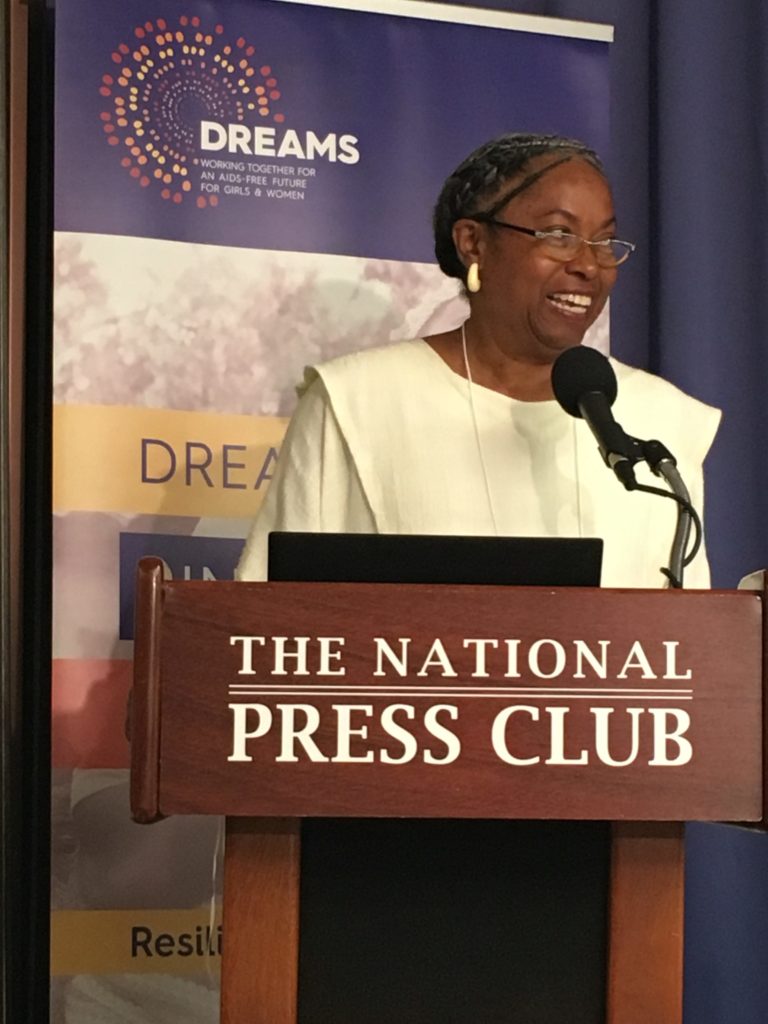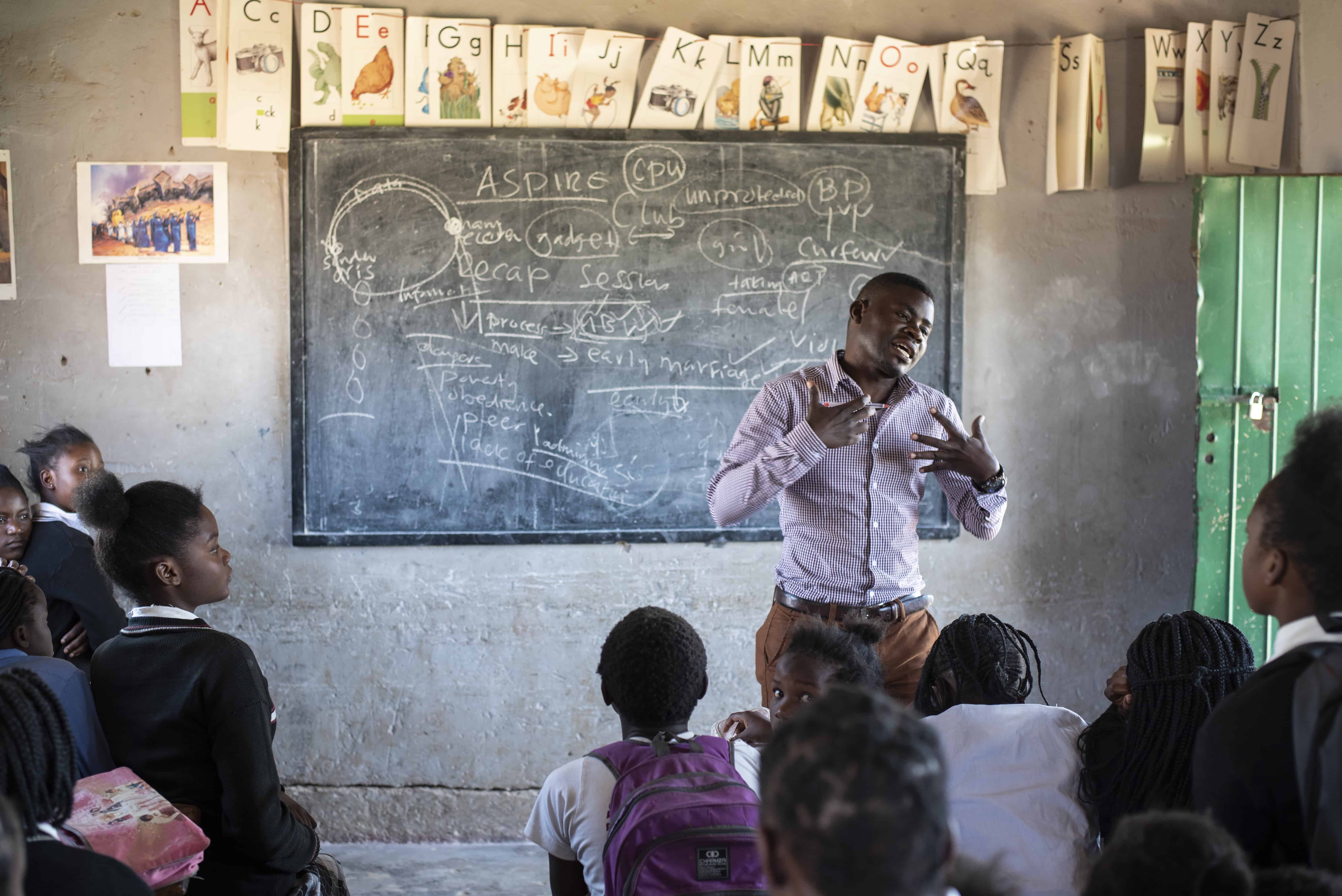Empowering Africas Daughters: Lessons from the DREAMS Innovation Challenge
June 5th, 2019 | viewpoint
On May 7, 2019, DREAMS Innovation Challenge held their closing event, Empowering Africa’s Daughters: Lessons from the DREAMS Innovation Challenge. The occasion celebrated the transformative impact of this initiative on the lives of over 160,000 adolescent girls and young women across ten countries in sub-Saharan Africa. The following are closing words by the project’s director, Folami Harris.
When JSI launched the DREAMS Innovation Challenge in October 2016, we said that:
“At the end of the project, we would hope to see girls and young women well on their way to feeling in control of decision making …as well as knowing what options exist for helping them mature into adulthood free of HIV”
Jodi-Ann Burey of Village Reach/Malawi put it this way, then
⎯ at every crossroad requiring decisions, a young woman is not only provided the opportunity to make a choice; but [the agency]to design the choices available to her.’
Options and choices are fundamental to empowerment and a life free of HIV.

In October 2016, we also said that:
“At the end of the project, we would hope to see girls and young women well on their way to …being motivated to stay in school and to see the connection between graduation and livelihood. “
The last two years have taught us that there is no shortage of motivation to stay in school among the many girls and young women pushed out of school. What is in short supply are:
Also in short supply are:
This is what we said in October 2016. Now, as we stand facing the end of this initiative, I’d like to share another lesson this project amplified:
However, education must also enable in girls to contribute to national development and self-reliance, to shape the choices they want for themselves and their world, and to empower them to reap the benefits from all that the world has to offer. Dazon Diallo of SisterLove put it in this way back in October:
⎯ Success is a young woman able to determine her destiny. She decides who she wants to be and how she wants to be that in the most healthy environment possible.
Innovations for safeguarding girls’ education and employability improved the means through which girls can achieve greater economic security. Through implementing partners like Touch Roots Africa (Lesotho), The African Centre for Women, Information and Communications Technology (Kenya), Save the Children (Malawi), IdeiaLab (Mozambique), and NIGEE in Uganda, DREAMS has made outstanding inroads in helping young women earn a living. But the gap between earning a living and a living a life built on equal opportunity, a life free from sexual harassment and economic exploitation remain. Let’s take it all the way. We need to provide young women more than a paycheck; young women need a better quality of life overall.
OK, so what about the boys and men in this equation? In October, we also said,
“At the end of the project, we would hope to see boys and young men applying a different approach to relationships with females.”
Gershom Kapaluala of Afya Mzuri put it in this way:
⎯ Success looks like one boy who takes up the challenge of knowing his HIV status and even if he finds out he is positive, he accesses the services to carry on with good health.’
These were some of the indicators we said we wanted to measure ourselves against at the end of the project. Here we are today, reflecting on the overall outcomes of the pilots tested under the DREAMS Innovation Challenge. You have seen the presentations offered today on important results. You began to hear their impact on the lives of young women. There are many more testimonials like the ones you have heard today with the data to support these very promising outcomes. In a race against time, the DREAMS Innovation Challenge has demonstrated the potential of these innovations for moving us closer to HIV epidemic control. Our team has done extremely well in working with the implementing partners to document these developments and I thank them.

JSI is privileged to have also contributed to the achievements of the implementing partners. Our African staff across the 10 countries played an important role in bridging the USG-Africa divide, not only at the community level but with our non-African implementing partners who had no previous experience or physical presence in Africa as well as with the PEPFAR country teams. As my colleagues often say about participatory capacity assessment, you don’t know what you don’t know. The same is true of development partners who have little more than travel experience with Africa and its complex history and social systems. Many practitioners in development do not know that they don’t know:
We needed an empowered bicultural team to bridge this divide. This was an element in team dynamics in the management of this project and a necessity for operating procedures as PEPFAR moves toward ‘investments for self-reliance.’ It is, for this reason, I would like to make special mention of the Regional Directors for the DREAMS Innovation Fund whose deep understanding of the cultural and social nuances that affect the lives of young girls and women has been instrumental to the success of this program.
Our regional directors were able to join us today ⎯Shombi Ellis and Wamuyu Manyara. They represent our broader Africa team, a group of 30+ at peak staffing. We salute their tremendous effort on the continent as the face of the project there, providing technical support and facilitating collaboration across multiple sectors and levels of consciousness for the 46 grantees and their 37 sub-partners. Thank you and each member of your team –Judy Mwangi, Washuka, Sbonelo, Innocent and the many others on the Africa team.
Also present are members of the senior management team based in the US, Liz Fabel, Deputy Project Director; Sujata Rana who managed the capacity building component and Ryan Macabasco on finance and grants. Jamie Rosen who has been the tremendous force behind our knowledge management and communications efforts and Amanda Johnson (who joined our team most recently) as MEL Manager are also present. Mark Kowalski, who led the writing of the technical application and served as my boss and senior technical advisor to the project is also here. He is joined by the current Senior Technical Advisor, Barbara Durr.
Equally important to our team are our grants officers –Carrie Bardo and Gennet Fantu; Program Officer, Sally Holmes, Program Coordinator, Heather Viland and Amie Barry our Finance and Operations Manager. We are grateful to these women and men who remain to the end and to the other individuals who have left the project earlier. Each contributed their own pearls of wisdom and we thank them.
I’d like to take the remaining time I have to share a few thoughts ⎯ in parting, and in the advent of PEPFAR’S localization strategy.
DREAMS has demonstrated alongside game-changing, cutting edge creativity, underlying assumptions and ignorance about Africa, African women and African culture and these represent weeds that choke the good harvest we all are hoping for in human development.
Development is a serious pursuit we here all believe in. How are we, as nationals of African countries and as development partners measuring up in our contribution to development? How have we individually and as members of organizations leveled the playing field for human development in the respective communities we serve?
Africa has survived centuries of colonial and neocolonial exploitation, which continues today. Africa has been the recipient of decades of foreign assistance and first world solutions on first world terms to solve its many complex challenges. Today, there is another ⎯ the PEPFAR/USAID initiatives aimed at funding indigenous partners directly and funding international partners to support this transition. Are our development strategies or our attitudes stuck in a colonial model of Africa the helpless and permanent dependent?
We cannot continue to list all the superlative successes we have achieved in strengthening Africa’s capacity to deliver; then lament all the reasons why Africa is devoid of the technical expertise or potential to be self-reliant after multiple decades of development assistance. We see in Africa, innovations led by African women and in particular young African women. To the young women who have benefited from this program, we look forward to not only your personal development but also your contributions to further the development of the continent and its people.
We strive to build lasting relationships to produce better health outcomes for all.